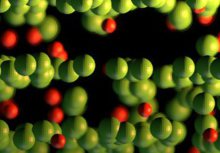Green Steel: the role of scrap
What are the main industrial transformation processes towards green steel?
In addition to electric steel mills, which produce steel mainly by melting steel scrap, hydrogen- or natural gas-based direct reduction processes are increasingly being used instead of the classic blast furnace route.
Here, iron ore is first used to produce sponge iron (Direct Reduced Iron (DRI) or Hot Briquetted Iron (HBI)), which is then melted into crude steel in the subsequently placed electric arc furnace or alternative melting units (such as huge induction furnaces) together with scrap or other iron carriers.
How much CO2 can be saved by green steel technologies?
Hydrogen- and / or natural gas-based direct reduction processes plus subsequent electric arc furnaces are much more sustainable than the conventional blast furnace route: compared to this classic route, CO2 emissions are significantly reduced with H-DRI.
Using average values in the technology comparison show that the scrap-based electric arc furnace (EAF) steel production route saves about 75 % of the CO2 produced compared to the conventional blast furnace route (BF/BOF). The the direct reduction (DRI) route (natural gas-based) saves about 50 to 60% per cent compared to the conventional blast furnace route (BF/BOF).
The use of hydrogen in the direct reduction process increases the savings effect even further, even down to a few percent emissions.
Process flexibility in green steel making
It must be considered however that the focus in the strategy and technology change to CO2-emission-avoiding CDA processes (Carbon-Direct-Avoidance) must be placed on the highest product qualities and grades, maximum flexibility in the input materials as well as continuous and energy-efficient process management in order to economically design recycling processes to minimise resource consumption.
What is the role of scrap in green iron and steel making?
With its positive environmentally relevant properties, steel scrap makes an important contribution to green steel production - and its importance in the steel production process will continue to grow. Technological conversions will increase the demand for scrap in the future, which will also produce steel of the highest quality when mixed with other iron carriers, such as from direct reduction processes.
Future green steel making is up to 50% a recycling operation
Future green steel making can also take on the role of a holistic recycling system in which other materials (e.g. non-ferrous carriers) are separated and discharged in addition to steel. Corresponding recycling plants already exist. The first considerations by steel mills to undertake the task of processing scrap into high-quality scrap in their own plants are already being made or are in the planning stage.
The role of contamination and scrap-related tramp elements in recycling and green steel making
Unwanted chemical contamination and lack of scrap availability can become a problem in future green steel making. We might encounter the problem a decreasing scrap quality in terms of density, Fe content and the lack of availability of high-quality scrap. In addition, steel production suffers from the increasing proportion of undesirable by-elements or impurities, such as copper, chromium, nickel or molybdenum, which makes the steel production process, and secondary metallurgical processes in particular, costly or the desired qualities can only be produced by dilution with DRI/HBI.
The demands of the steel mills on the recycling industry in terms of quantity, quality and purity of the delivered scrap will increase in the future. The scrap industry will have to continue to invest in its scrap processing facilities in order to be able to provide the scrap qualities demanded by the steel industry. In the long term, scrap availability will cover about 50 per cent of the steel producers.


